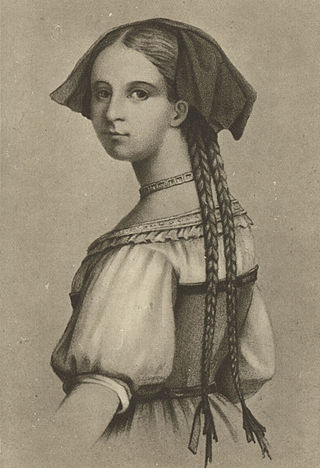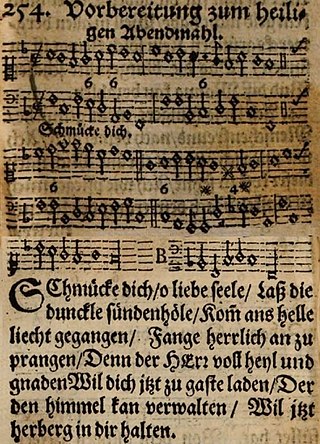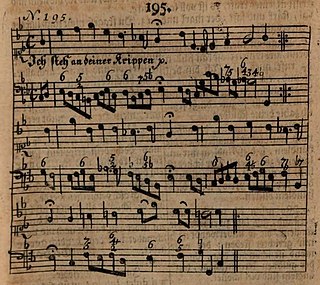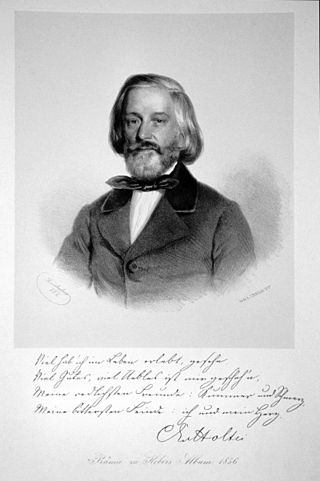![Mozart bust medallion by Joseph Georg Mansfeld [de], with the score of "An Chloe", published in 1789 by Artaria Mozart Mansfeld An Chloe.jpg](http://upload.wikimedia.org/wikipedia/commons/thumb/8/8b/Mozart_Mansfeld_An_Chloe.jpg/220px-Mozart_Mansfeld_An_Chloe.jpg)
"An Chloe" (To Chloe), K. 524, is a composition for voice and piano by Wolfgang Amadeus Mozart to a poem by Johann Georg Jacobi. Mozart composed it on 24 June 1787 in Vienna.
![Mozart bust medallion by Joseph Georg Mansfeld [de], with the score of "An Chloe", published in 1789 by Artaria Mozart Mansfeld An Chloe.jpg](http://upload.wikimedia.org/wikipedia/commons/thumb/8/8b/Mozart_Mansfeld_An_Chloe.jpg/220px-Mozart_Mansfeld_An_Chloe.jpg)
"An Chloe" (To Chloe), K. 524, is a composition for voice and piano by Wolfgang Amadeus Mozart to a poem by Johann Georg Jacobi. Mozart composed it on 24 June 1787 in Vienna.
Jacobi's poem consists of 13 four-line stanzas with an A–B–A–B rhyme scheme. Mozart, who found it in the Göttinger Musenalmanach from 1785, [1] used only the first four. The stanzas not used tell how the lovers' happiness was cut short by betrayal and death. The "death" in the third stanza refers to the height of passion after which the lovers release their embrace – la petite mort . From the ancient Greek novel Daphnis and Chloe , Chloe is the name of a shepherdess often used in poetic pastoral settings.
Wenn die Lieb' aus deinen blauen,
hellen, offnen Augen sieht,
und vor Lust hinein zu schauen
mir's im Herzen klopft und glüht;
Und ich halte dich und küsse
deine Rosenwangen warm,
liebes Mädchen, und ich schließe
zitternd dich in meinem Arm,
Mädchen, Mädchen, und ich drücke
dich an meinen Busen fest,
der im letzten Augenblicke
sterbend nur dich von sich läßt;
den berauschten Blick umschattet
eine düstre Wolke mir,
und ich sitze dann ermattet,
aber selig neben dir.
When love shines from your blue,
bright, open eyes,
and the joy of gazing into them
makes my heart pound and glows;
And I hold you and kiss
Your rosy cheeks warm,
dear girl, and I clasp
you trembling in my arms,
Girl, girl, and I press
you firmly to my breast,
which at the last moment,
only dying, lets you go;
My intoxicated gaze is shadowed
by a gloomy cloud,
and then I sit, exhausted,
but blissful, next to you.
Apart from the first six bars that Mozart entered into his catalogue, the autograph is lost, presumably by the first publisher, Artaria, where it was published in 1789. It was so popular that it was published in Munich and in Denmark (in a Danish translation) during Mozart's lifetime, and in many editions in the following decades. [2]

Mozart's catalogue entry [3] gives the tempo as allegretto, Artaria gives it as allegro. The key signature is E-flat major, the time signature is alla breve (2/2), the vocal range is from D4 to A♭5, and the work consists of 74 bars, taking about 2 1/2 minutes to perform.
The form of the composition is not strophic, but a rondo (A–B–A–C–A′) with a coda. The vocal line is independent from the keyboard accompaniment. Upward leaps in the melody in bars 8, 9, 13 indicate the lovers' delight, piano staccato in bars 21 and 23 depicts heartbeats, there are shivers (piano bars 24, 25, voice melisma 35, 36), breathlessness (mid-word rests in bars 41, 43), and fatigue (longer rests in bars 49 and 50, leading to a general pause in bar 51). The coda invokes operatic style in bars 65 to 70, and bars 62 to 65 employ sudden dynamic changes from the Mannheim school. The piano reuses its prelude below the voice in bar 67 and extends it to form a postlude. [2] [4] The first three verses are covered in 39 bars, while the fourth alone takes 30.
Several engravers used that score in their depictions of Mozart.

The Piano Sonata No. 11 in A major, K. 331 / 300i, by Wolfgang Amadeus Mozart is a piano sonata in three movements.

"Der Tod und das Mädchen", D 531; Op. 7, No. 3, is a lied composed by Franz Schubert in February 1817. It was published by Cappi und Diabelli in Vienna in November 1821. The text is derived from a poem written by German poet Matthias Claudius. The song is set for voice and piano.

Verklärte Nacht, Op. 4, is a string sextet in one movement composed by Arnold Schoenberg in 1899. Composed in just three weeks, it is considered his earliest important work. It was inspired by Richard Dehmel's poem of the same name, combined with the influence of Schoenberg's strong feelings upon meeting the sister of his teacher, Alexander von Zemlinsky (1877–1923), whom he married in 1901. The movement can be divided into five distinct sections which refer to the five stanzas of Dehmel's poem; however, there are no unified criteria regarding movement separation.
"Jesu, Joy of Man's Desiring" is the most common English title of a piece of music derived from a chorale setting from the cantata Herz und Mund und Tat und Leben, BWV 147, composed by Johann Sebastian Bach in 1723. The same music on different stanzas of a chorale closes both parts of the cantata.

The Kegelstatt Trio, K. 498, is a piano trio for clarinet, viola and piano in E-flat major by Wolfgang Amadeus Mozart.

The Piano Sonata No. 14 in C minor, K. 457, by Wolfgang Amadeus Mozart was composed and completed in 1784, with the official date of completion recorded as 14 October 1784 in Mozart's own catalogue of works. It was published in December 1785 together with the Fantasy in C minor, K. 475, as Opus 11 by the publishing firm Artaria, Mozart's main Viennese publisher.

Wolfgang Amadeus Mozart's Piano Sonata No. 10 in C major, K. 330 / 300h, is one of the three works in the cycle of piano sonatas K.330-331-332. The sonata was composed in 1783, when Mozart was 27 years old. It was published, with the other two sonatas by Artaria in 1784. A typical performance of this sonata lasts around twenty minutes.

"Als Luise die Briefe ihres ungetreuen Liebhabers verbrannte", K. 520, is a song for piano and voice (soprano) by Wolfgang Amadeus Mozart to a poem by Gabriele von Baumberg.

"Heimliche Aufforderung", Op. 27, No. 3, is one of a set of four songs composed for voice and piano by Richard Strauss in 1894. The German conductor Robert Heger orchestrated it in 1929. The text is from a poem in German by John Henry Mackay.

"Das Veilchen", K. 476, is a song for voice and piano by Wolfgang Amadeus Mozart, written in Vienna on 8 June 1785, to a poem by Johann Wolfgang von Goethe.

"Was willst du dich betrüben" is a hymn in seven stanzas by the German Baroque poet, Lutheran minister and hymn-writer Johann Heermann. The chorale was first published in 1630 during the Thirty Years' War. It is focused on trust in God, even when facing adversaries.

Kleine Gigue in G major, K. 574, is a composition for solo piano by Wolfgang Amadeus Mozart during his stay in Leipzig. It is dated 16 May 1789, the day before he left Leipzig. It was directly written into the notebook of Leipzig court organist Carl Immanuel Engel. It is often cited as a tribute by Mozart to J. S. Bach, although many scholars have likened it to Handel's Gigue from the Suite No. 8 in F minor, HWV 433. In fact, the subject of the gigue bears a marked similarity to the subject of J. S. Bach's B minor fugue no. 24 from Book 1 of Das Wohltemperierte Klavier. Mozart has changed the tempo from Largo to Allegro deciso and the time signature from common time to 6
8 but the similarity between the two is unmistakable.

"Welcome and Farewell" is a poem by Johann Wolfgang von Goethe from the collection Sesenheimer Lieder. It was published for the first time in 1775 in the women's magazine Iris. Franz Schubert set it to music as a lied (D.767).

"Schmücke dich, o liebe Seele" is a Lutheran hymn in German, with lyrics by Johann Franck and a hymn tune by Johann Crüger. It was first published in Crüger's 1649 Geistliche Kirchen-Melodien, and was later adopted in other hymnals, such as the 1653 edition of his Praxis pietatis melica.

"In dich hab ich gehoffet, Herr" is a Lutheran hymn in seven stanzas, written by Adam Reusner and first published in 1533. He paraphrased the beginning of Psalm 31. It was first sung to the melody of a Passion hymn. The melody connected with the hymn in 1560 was derived from models dating back to the 14th century. A third melody from 1608 became a hymn tune for several other songs and translations to English. In the German Protestant hymnal Evangelisches Gesangbuch, the hymn appears as EG 257 with the second melody. Johann Sebastian Bach used the second and third melodies in chorale preludes, and the third also in cantatas and the St Matthew Passion.

"Ich steh an deiner Krippen hier" is a German Christmas hymn, with lyrics by Paul Gerhardt which were first published in 1653. It was then sung with an older melody by Martin Luther, but a melody which was likely created by Johann Sebastian Bach for Schemellis Gesangbuch of 1736 is now part of current Protestant and Catholic hymnals.
"Nun liebe Seel, nun ist es Zeit", alternatively written "Nun, liebe Seel, nun ist es Zeit", is a Lutheran hymn for Epiphany, in five stanzas of six lines each, by Georg Weissel. It was first printed in 1642, set as a motet by Johannes Eccard. A version with an additional stanza is attributed to Johann Christoph Arnschwanger.

"Kommt ein Vogel geflogen" is a German-language Volkslied and love song from Lower Austria. While it was passed down orally, probably in dialect, some text first appeared in print in 1807. Six stanzas appeared in a Posse mit Gesang by Karl von Holtei in Berlin in 1824 and made the song popular. In arrangements, it also became a children's song. Siegfried Ochs treated the melody humorously to variations for piano, imitating different styles of classical composers.
"Das Traumbild", K. 530, is a song, or Lied, for piano and voice by Wolfgang Amadeus Mozart to a poem by Ludwig Hölty.
"Abendempfindung an Laura", K. 523, is a song by Wolfgang Amadeus Mozart dated June 24, 1787, in Vienna, written at the time of the opera Don Giovanni and Eine kleine Nachtmusik.